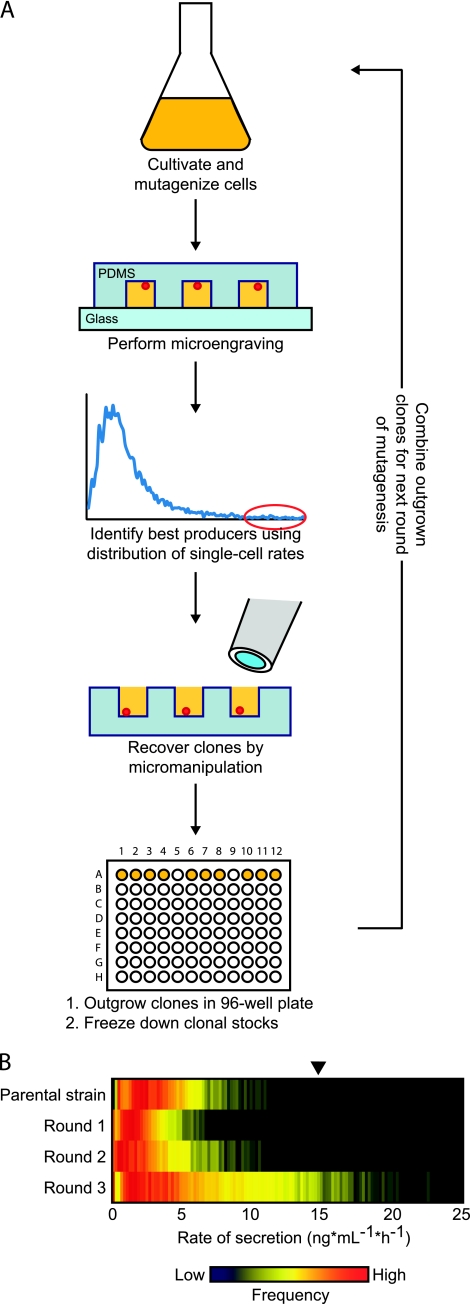Fig. 1.
(A) Iterative process of mutagenesis and microengraving enables generation and identification of single cells with improved rates of heterologous protein secretion. Wild-type P. pastoris cells constitutively secreting a human Fc fragment were subjected to chemical mutagenesis and then analyzed by microengraving to characterize the rates of protein secretion from single cells quantitatively. Cells with the highest rates of secretion were recovered by micromanipulation, grown, and frozen. These clonal stocks were regrown and pooled before each subsequent round of mutagenesis and screening. PDMS, polydimethylsiloxane. (B) Distribution of single-cell rates of secretion obtained by microengraving using polyclonal populations comprising 10 clones recovered in each round of chemical mutagenesis. Frozen stocks of recovered clones were used to inoculate separate 10-ml cultures of YPD and grown to mid-log phase before pooling and analysis by microengraving. The black arrow indicates a rate five times the median rate of secretion of the parental strain.

